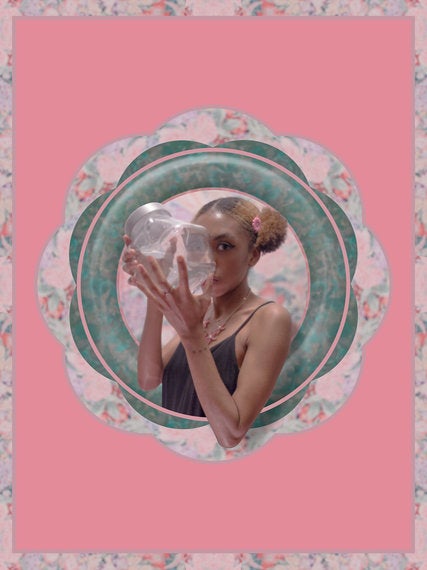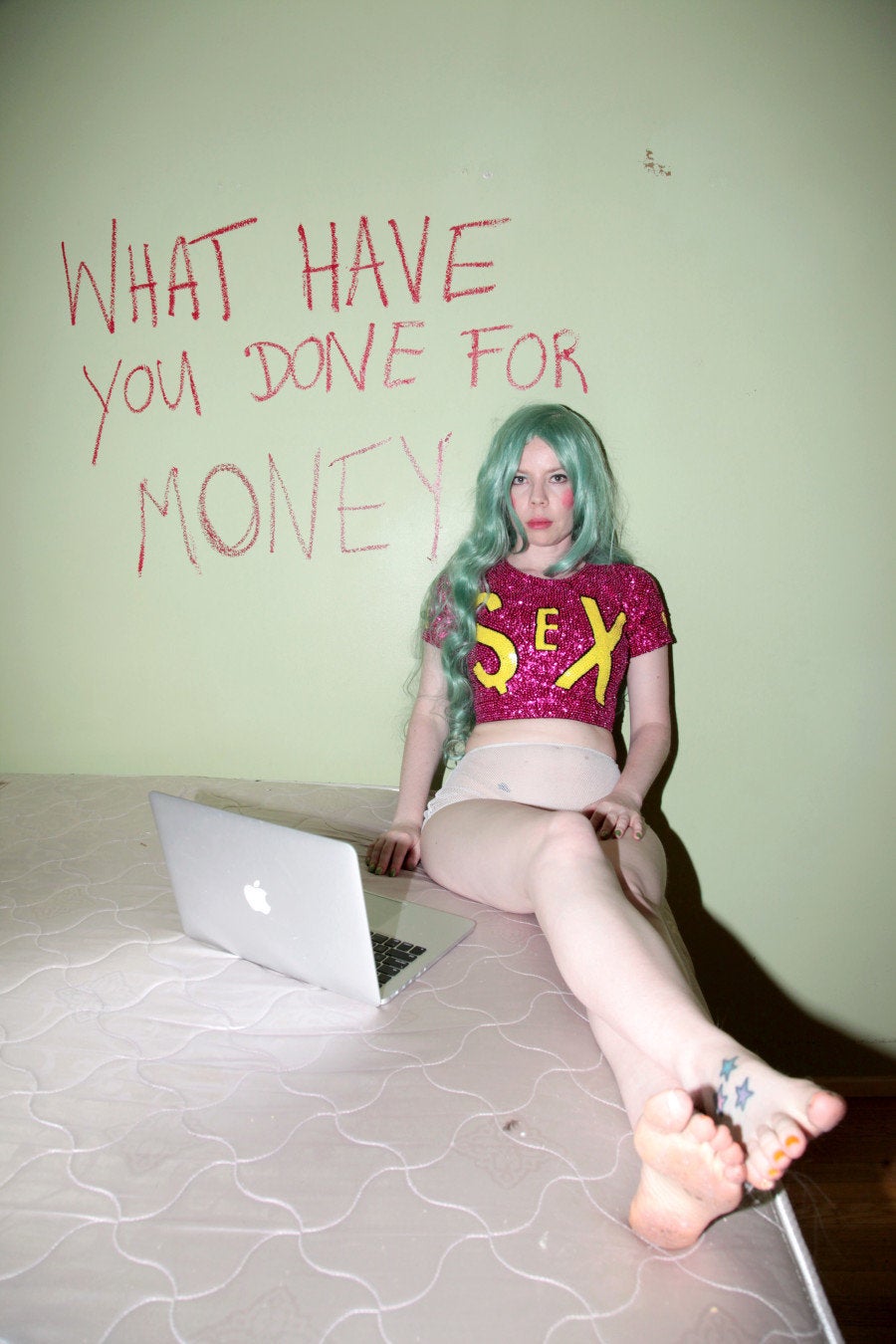The Internet is a complicated space for most young women. One the one hand, it's a site of frequent abuse, where women's bodies are passed around like objects, criticized without recourse, violently threatened and harassed. And yet, the web also carves out a realm for incredible creativity, community, activism and inspiration.
As both a concentrated mirror of sexism as it exists offline, and a stage to bring personal issues into the public sphere, the Internet has become a powerful place for feminism to declare its home base.
In his new documentary film "The F Word," filmmaker Robert Adanto highlights the contemporary artists using new media to bring fourth-wave feminism to the World Wide Web. Whether they are promiscuous, prude, pro athlete, porn star, selfie-addict, devout Christian, theorist, cheerleader -- these fourth wavers believe the only truly feminist choice is a choice a woman makes freely for herself. So bring on the hair flipping, vocal fry, cleavage, baby talk and whatever other traditionally maligned feminine habits you please. There's no shame in being a womanly woman or girly girl.
"Feminism as these women define it is very different from what you'll get in soundbites on the news," filmmaker Adanto explained to The Huffington Post. "I think we've demeaned that word as a culture. It remains the 'F word.'"
Through video, performance, photography and a combination of the three, the featured artists make art that is powerful because of, not in spite of, their gender. Much of this is achieved by exploring dynamics of the feminine body, the domestic space, gender roles and sexuality. Following in the footsteps of '60s art queens like Hannah Wilke and Carolee Schneemann, the artists blur the line between their lives, their bodies and their work.
"I wanted to create a mosaic of feminist performance," Adanto said. "At first I was looking specifically at Brooklyn but as I was starting to put things together, I realized a big part of the fourth wave is online. Why should I limit this to Brooklyn if we're talking about the digital world?"
The structure of the film falls somewhere between, according to Adanto, an essay and a curated exhibition. He brings this up when asked if he feels uncomfortable about a man controlling the narrative of these young female artists. "I let them explain what their work is," Adanto replied. "I make choices, of course, with choosing different photos that illustrate or bolster the claims they make. But I allow people to say what they believe, and I'm just putting it together."
Adanto's targets audience is an audience who learns about feminism from the news, not their gender theory classes. The same goes for their knowledge of contemporary art. "I didn't want to make a film for the marginalized feminist art cliques," he said. "I'm championing art making. I think human beings are at their best when they are creating meaning from raw materials or from their imagination outward. I think that's our higher purpose. More people should care about art, and they don't!"
Meet the artists of "The F Word" below.
1. Narcissister
Narcissister, never seen without her Barbie mannequin mask, stages sexual, burlesque-inspired performances about the roles women play and, of course, tear down. "Narcissister is nobody," she said in an interview with VICE. "It is a plastic mask that is only animated by the person who is wearing it. The mask becomes a mirror and it’s very rare for artists to make themselves a mirror. It’s so much more common that we get absorbed into them. Into their subjectivity."
2. Ann Hirsch
Hirsch is a video and performance artist whose work explores the intersection of technology, sex and gender. Her virtual play "Twelve," which lived on an iPhone app until it was censored and taken offline, follows a 12-year-old girl who starts up a virtual relationship with a 27-year-old man on AOL Instant messenger.
"It was worse when I first started and there wasn’t any dialogue about any of this," she said in an interview with New York Magazine. "I had art professors who were like, You shouldn’t be doing this. You’re smarter than this. More recently, there’s been more discussion. Selfie is a word everyone knows. We’re really changing how we view narcissism and showing ourselves and what that means, and there’s more interest in that, especially in the art world."

Santana creates dreamy, Afrocentric self-portraits that take the selfie from banal self-documentation to a mode of cosmic transcendence.
"Anybody who thinks selfies are only vain wants to reduce the importance of a human being. I am not sure where the judgment comes from," she said in an earlier interview with HuffPost. "We should all be reflective of ourselves whether we are in a good place or bad place. Selfies help to bring us out of a bad place to uplift ourselves and connect with others."
4. Kate Durbin

Durbin is a writer and performance artist whose work bridges the gap between private and public, personal and political, especially as it pertains to femininity. Her series "Cloud 9" invited female-identifying artists to confess the strangest things they've done for money to supplement their art careers.
She explained to HuffPost: "I started to notice everything in the world around me that had to do with art and money, and I paid attention to it, instead of ignoring it -- instead of believing in the fantasy that these were all 'individual failings,' that none of these people were 'good enough' artists to make it."
Goyette is a multidisciplinary artists whose sex-centric work explores kink, fantasy, queerness and taboo. Through her alter-ego Lobsta Girl, Goyette partakes in deliciously bizarre lobster pornos that play with power dynamics, non-normative roles and the psychology of desire.
"I draw inspiration from what I see that’s very structured and conservative in art, I draw inspiration from that, I also get inspiration from history," she told Posture Mag. "I’m nerding out on Puritan history all of the time. I like to read a lot of non-fiction."
6. Sadaf
Sadaf is a DJ and multimedia artist who operates between the languages of experimental DIY and mainstream celebrity. As she explained to The Quietus: "I think at this point culturally, we're at a place where being confined to one genre is conservative in my opinion! Whether that's the umbrella of experimental, or the umbrella of pop. I really wanted to challenge what both those genres imply and mix them up a little bit."
Schrager is a photographer whose eroticized self-portraits present the selfie as a means of providing a woman complete creative and economic control over her body. For her performance project "Naked Therapy," Schrager assumed the identity of therapist Sarah White, and lead therapy sessions in the nude.
"Freud was a male therapist and had created a version of therapy to match female sexuality (hysteria)," she told AnimalNY. "I was a female therapist and had created a version of therapy to address male sexuality. Plus, I felt there had to be something to the fact that there are tons of images of naked women online -- I thought there was something about nakedness in a woman to a (heterosexual) man that is essential, therapeutic, and driven by evolution."
8. Rachel Mason
Mason is a multidisciplinary artist whose recent experimental rock opera, "The Lives of Hamilton Fish," was inspired by a 1936 newspaper front page on which two men named Hamilton Fish were pronounced dead. One was a statesman, the other a child serial killer. "Over the course of nearly a decade I imagined how these two men might have met and wove together an imaginary story which took me along a journey into places including Sing Sing Prison and The American Society of Psychical Research," she told AnimalNY.
9 & 10. Go!PushPops (Elisa Garcia de la Huerta and Katie Cercone)
Go!PushPops is a radical, transnational queer feminist art collective that uses the female body as a mode of resistance and celebration. Led by Elisa Garcia de la Huerta and Katie Cercone, the sex-positive community embraces non-mainstream influences including yoga, shamanism, witchcraft and hip hop. This summer, the collective hosted a Beach Babylon Feminist Prayer Service, a topless women's ritual that included no shortage of chanting, drinking herbal infusions, and "conducting sacred miracles."
11. Damali Abrams
Abrams is a video artist whose work incorporates elements of performance and collage. Her ongoing fictional television network, "Self-Help TV," riffs off the mainstream language of self-help and self-improvement while paying attention to how race, class, personal history and other elements affect one's wellbeing.
"Collaboration is a really amazing way to learn about art and myself," she said in an interview with Delve. "I learn so much from everyone that I collaborate with. I guess the most valuable lesson is to keep an open mind as well as an open heart and really use the opportunity to get out of my comfort zone and try new things."
12. Claudia Bitran
Bitran is a multidisciplinary artist whose pop culture-laced works combine obsessive fandom with a taste of the uncanny. For her "Britney" series, Bitran recreates iconic Britney Spears videos, rendering a DIY copy of the sets, including perfectly memorized choreography.
13. Faith Holland
Holland is a multidisciplinary artist whose works explore topics like beauty, porn, cats and the Internet. Her "Porn Interventions" series is a collection of site-specific videos made for porn site RedTube, in which Holland employs and subverts pornographic tropes to yield a mix of arousal, frustration and absurdity.
"My relationship to porn is always evolving," she told AQNB, "particularly since I’ve been looking at SO MUCH for these projects. I’ve never been anti-pornography, and for me that’s a really important factor to consider in relation to my work. But I do find faults in pornography -- its homogeneity, its production that targets heterosexual male audiences, its privileging of thin white cis-women’s bodies and the fetishization of all other bodies. So I try to make interventions into some of these problems through my work to open up a dialogue about porn’s biases and the potential for better porn. It’s meant as a loving critique."
14. Michelle Marie Charles
Charles is a video artist whose catchy and glitchy videos spoof mainstream hip hop music videos. Charles herself plays a variety of roles, thus subverting the objectifying space normally reserved for black women in rap videos. Lines such as "Girl, I love you so / for all your emotional attributes such as your titties" illuminate the pitfalls of the genre in a critical yet loving manner.
Also on HuffPost:

